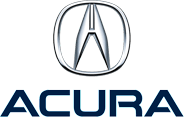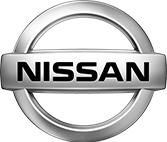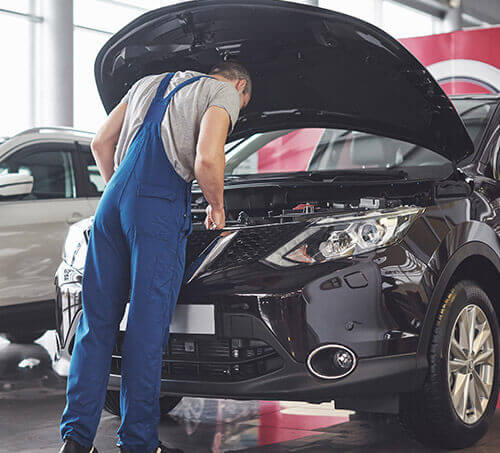When your clutch begins to show signs of wear or failure, the type of repair required will depend on which component is malfunctioning. Clutch repairs can range from simple part replacements to more complex procedures, such as resurfacing the flywheel. This article will explain the most common clutch repairs, helping you understand what might be needed and how each repair type affects your vehicle’s performance.
Why Clutch Repairs Are Essential
The clutch plays a critical role in your vehicle’s transmission, allowing you to engage and disengage power between the engine and the wheels. When parts of the clutch system start to wear out, it can lead to a range of problems, such as slipping, grinding gears, or difficulty shifting. Timely repair or replacement of worn components can prevent further damage to your transmission and other parts of your vehicle, saving you money in the long run.
1. Clutch Disc Replacement
The clutch disc is one of the first components to wear out in most clutch systems. Over time, the friction material on the clutch disc becomes thin, making it difficult for the disc to grip the flywheel properly. This results in a slipping clutch, where the engine’s RPMs increase but the vehicle doesn’t accelerate as it should. In some cases, the clutch disc might also show signs of glazing or contamination, which can reduce its effectiveness.
When to consider clutch disc replacement:
- You experience clutch slipping, particularly when accelerating in higher gears.
- The clutch doesn’t engage smoothly, causing jerky movements or a loss of power.
- There’s a noticeable burning smell after prolonged use of the clutch.
Replacing the clutch disc typically requires removing the transmission to access the clutch assembly. Most mechanics will recommend replacing the entire clutch kit (which includes the disc, pressure plate, and release bearing) to ensure long-term reliability.
2. Pressure Plate Repair or Replacement
The pressure plate works in tandem with the clutch disc to transfer power from the engine to the transmission. It applies pressure to the clutch disc, pressing it against the flywheel to engage the clutch. If the pressure plate weakens or becomes damaged, it won’t apply enough pressure to the clutch disc, causing slipping or difficulty in shifting.
When to consider pressure plate repair or replacement:
- The clutch slips even when the disc is relatively new or shows little wear.
- Shifting gears becomes difficult, with the gear lever feeling stiff or resistant.
- The clutch pedal feels too soft or spongy, or it sticks when pressed.
Pressure plate issues may require resurfacing, but in most cases, replacement is recommended, especially if it’s worn or cracked. Replacing the pressure plate as part of a full clutch kit ensures all components work efficiently together.
3. Flywheel Resurfacing or Replacement
The flywheel plays a key role in the smooth operation of your clutch system by storing rotational energy and providing a surface for the clutch disc to grip. Over time, the surface of the flywheel can become worn, warped, or damaged, causing vibrations or clutch shudder (a shaking sensation when engaging the clutch). In some cases, the flywheel may also become cracked due to overheating or excessive wear.
When to consider flywheel resurfacing or replacement:
- You feel vibrations or shuddering when engaging the clutch.
- The flywheel shows visible signs of damage or excessive wear during a clutch inspection.
- The clutch disc isn’t engaging smoothly with the flywheel, leading to jerky gear shifts.
In many cases, a flywheel can be resurfaced (machined to restore a smooth surface) if the wear isn’t too severe. However, if the flywheel is cracked or has deep grooves, replacement is the best option to prevent further damage to the clutch system. Also keep in mind that there are two types of flywheels seen in modern vehicles. The traditional flywheel is a single piece of metal and is often resurfaced, assuming that there is enough thickness left to do so. A dual mass flywheel has a reciprocating weight built into the flywheel in order to act as a harmonic balancer to the crankshaft. Dual mass flywheels are more expensive and often cannot be resurfaced, making it necessary to replace the flywheel when it is showing signs of wear.
4. Hydraulic System Repairs
Many modern vehicles use a hydraulic system to operate the clutch. In these systems, fluid pressure is used to engage and disengage the clutch via the clutch master cylinder and slave cylinder. If there’s a leak or air in the hydraulic system, the clutch pedal may feel spongy or soft, and the clutch may not fully disengage, making it difficult to shift gears.
When to consider hydraulic system repairs:
- The clutch pedal feels soft or spongy and doesn’t engage until it’s near the floor.
- You notice hydraulic fluid leaking from the master or slave cylinder.
- The clutch doesn’t fully disengage, causing grinding when shifting gears.
Repairing the hydraulic system usually involves replacing the master cylinder, slave cylinder, or both. In some cases, simply bleeding the system to remove air bubbles can solve the problem. Regularly checking the hydraulic fluid level can help prevent major issues with your clutch system.
5. Complete Clutch Replacement
In more severe cases, especially when multiple components are worn out or damaged, a complete clutch replacement is necessary. This usually involves replacing the clutch disc, pressure plate, release bearing, and possibly the flywheel if it’s too worn or damaged to be resurfaced. A complete clutch replacement is often recommended if the vehicle has high mileage or if there’s significant wear across multiple clutch components.
When to consider a complete clutch replacement:
- Your clutch shows multiple signs of failure, including slipping, difficulty shifting, and unusual noises.
- The clutch has worn out after many miles of use, or it has failed completely.
- The cost of repairing individual parts exceeds the cost of replacing the entire clutch system. Since the majority of the labor cost revolves around removing the transmission, it is often less expensive to replace the whole clutch assembly once the transmission has been removed.
A complete clutch replacement can be a more cost-effective solution in the long run, especially if your clutch system has been subject to excessive wear. Replacing all the major components ensures that your clutch operates reliably for many miles to come.
FAQs About Common Clutch Repairs
How long does a clutch repair take?
Clutch repairs usually take between 3 to 8 hours, depending on the type of repair and the vehicle. Replacing a clutch disc or pressure plate typically takes longer due to the need to remove the transmission.
Is it worth resurfacing the flywheel?
Resurfacing the flywheel is a good option if it shows surface wear but isn’t cracked or severely damaged. It’s a cost-effective way to restore the clutch’s smooth operation, but if the flywheel is heavily damaged, replacement is a better option. Additionally, many modern flywheels are less expensive to replace than they are to resurface.
Can I replace only the clutch disc?
While it’s possible to replace just the clutch disc, it’s often recommended to replace the entire clutch kit (disc, pressure plate, and release bearing) to avoid premature wear on the remaining components. This approach ensures better overall performance and longevity.
What causes hydraulic system failure in clutches?
Hydraulic system failure is usually caused by leaks in the master or slave cylinder, leading to a loss of fluid pressure. Air can also enter the system, which affects the pressure needed to engage the clutch. Regularly checking the hydraulic fluid can help prevent these issues.
How often should I replace my clutch?
The lifespan of a clutch varies depending on the vehicle and driving conditions. Most clutches last between 50,000 and 100,000 miles, but aggressive driving, frequent stop-and-go traffic, or towing heavy loads can reduce this lifespan.
Understanding the most common clutch repairs helps you make informed decisions about your vehicle’s maintenance. Whether you need a simple clutch disc replacement or a complete clutch overhaul, addressing clutch problems early can prevent further damage and keep your car running smoothly. For more advice on maintaining your clutch, explore our other articles in this clutch repair series or consult a trusted mechanic in your area today.
Advanced Transmission Center is a Colorado-owned and operated auto repair shop with locations in Denver / Lakewood and Westminster. ATC specializes in driveline issues such as automatic transmission repair, four wheel drive repair, clutch replacement, differentials, manual transmissions and CVT. As Colorado's first AAA approved shop our goal is to provide accurate, timely service with exceptional customer satisfaction. All of our technicians are certified in the latest makes and models and we are one of the few transmission repair shops with a nationwide warranty.



 Free Customer Towing Service
Free Customer Towing Service  Free TrueTest™ Inspection
Free TrueTest™ Inspection  Fast Transmission Services
Fast Transmission Services  Comprehensive Warranty in Denver
Comprehensive Warranty in Denver 

























